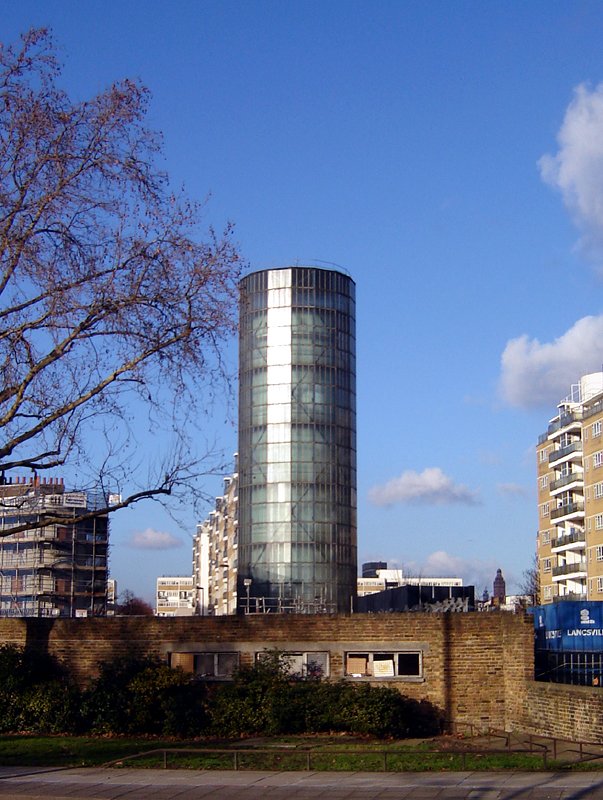
Pimlico District Heating Undertaking (PDHU)
Accumulator Tower, Pimlico by Fin Fahey
DECARBONISING THE UK’S OLDEST DISTRICT HEATING NETWORK
The PDHU supplies energy to over 3,000 homes, 50 commercial premises, and 4 schools in London. Established 70 years ago to combat air pollution, it quickly became the largest district heating scheme in the city. However, it is now Westminster City Council's largest carbon emitter and requires urgent decarbonisation action to maintain its success and reduce its environmental impact.
The PDHU's existing system holds the potential to serve as a pioneering example of clean, renewable energy and council-managed distribution of heat for the public good. By maximising the system's potential, the team aims to set a precedent for sustainability and pave the way for a greener future. Their efforts represent a significant step in addressing the climate emergency and working towards a carbon-neutral future for Westminster, while also preserving the social legacy of the PDHU system.
INSIGHT
IDEA
Westminster's commitment to sustainability: driving innovation and inspiration for a carbon-neutral future
What will the project deliver?
The project's goal is to provide affordable and sustainable heat for residents of Westminster while reducing the environmental impact of the district heating system. By developing district heating schemes, the team aims to enable access to necessary heat while supporting Westminster's carbon neutrality goal and tackling the climate emergency. Leveraging innovative solutions and building on the legacy of the PDHU, the project aims to pave the way for a greener future and drive progress towards sustainability for all.
The project began with a thorough place-mapping exercise to identify and evaluate strategic options for decarbonising the heat supply to residents. The team evaluated options from a lifecycle perspective to ensure sustainability at every stage.
To support this goal, the team developed a technical feasibility appraisal, a techno-economic feasibility appraisal, and a Stage 2 concept design for an industrial-scale river source heat pump scheme. A multi-disciplinary team was assembled to develop the concept design, which is set to be installed at the main energy centre at Churchill Gardens.
The team also identified a ventilation shaft heat pump scheme for connection to a TfL ventilation shaft via an ambient loop linked to a repurposed energy centre within the PDHU estate.
As the project progresses, the team continues to de-risk the project by exploring a range of strategic options, such as full electrification, and seeking appropriate commercial pathways to market.
Throughout the design development, the team considered a range of refrigerants, including ammonia and propane, assessing the health and safety risks and the potential for reducing the global warming effect.
IMPLEMENTATION
• Scheme-wide decarbonisation potential assessment
• Identification and evaluation of decarbonisation opportunities
• Techno-economic and lifecycle carbon modelling of key strategic pathways
• BSRIA Stage 2 designs for key recommended options
• Stakeholder engagement and commercialisation support
• Multi-disciplinary team coordination services
SERVICES
IMPACT
A carbon reduction of up to 75% against the baseline ‘do nothing’ scenario in 2030
The river source heat pump is predicted to contribute 95% toup to future heat demand.
The scheme will provide affordable heat for residents to help alleviate fuel poverty.
The scheme will improve air quality through the reduction of NOx


